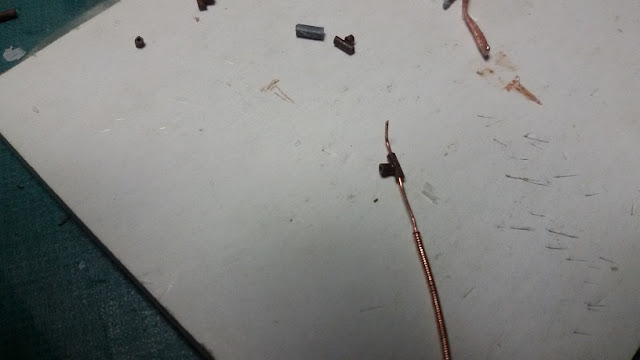 |
| Box Cover |
The Arado Ar-234 holds a special place in aviation history by being the first ever operational jet bomber. I have always been fascinated by its sleek design as well as the engineering behind it and I've always wanted to build a scale model of the "Blitz".
I will be presenting this build in parallel with the Macchi C.205 which I have been writing about so far. In contrast to the high-detail Macchi build, this build will be relatively straight forward and will only use aftermarket components to improve/enhance the model.
The kit is from HobbyCraft and hails from 1989. I picked this up from a friend who had already bought a ton of aftermarket resin parts to improve the model.
In this Series
- Part 1 - Introduction
- Part 2 - The Cockpit I
- Part 3 - The Cockpit II, The Instrument Panel
Box Contents
 |
| The box contents |
The image above shows the box contents, including the aftermarket parts which had been bought by the previous owner of the kit. These include:
- Metal undercarriage legs and resin wheels;
- Photo-etch fret with canopy and cockpit detail;
- Resin cockpit detail;
- Resin wing control surfaces, and;
- Resin engine intakes.
The surface detail on the plastic parts is pretty good considering the kit's 26 years of age. Panel lines are recessed and crisp, the parts are flash free and the fit is surprisingly good. All bodes well for a relatively straightforward build.
Preparing the Wings
The first task I chose to tackle was to prepare the wings to accept the resin control surfaces. This meant cutting out the kit's control surfaces from the wings to make way for the resin replacements.
 |
| Sawing off the existing control surfaces. |
To do this I used a number of micro-saws specifically designed for this kind of job. Using the panel lines as a guide, I gently ran the saw across the wing surface around the control surfaces.
Once the first wing half is done, I check it against its counterpart to ensure that the panel lines match up.
 |
| Checking that the panel lines align before cutting |
Thankfully the panels did align on the four wing halves and the same process was repeated until all the kit control-surfaces were hacked off.
 |
| Test-fitting the resin control surfaces |
Before gluing the wing halves together I drill holes for the engine mounting points:
 |
| Drilling the engine mounting holes |
I then proceeded to test fit the engines to the wings and the wings to the fuselage:
 |
| Test fitting engines, wings and fuselage |
Next Steps
The next step will be tackling the cockpit area by preparing the supplied resin parts and test fitting everything to the fuselage.
This is turning out to be quite an enjoyable build, the kit has aged well and the aftermarket parts are just one big bonus.
Stay tuned for more on both the "Blitz" and the Macchi. Thanks for watching and please drop a line if you have any suggestions on how I can improve the content of these posts.











































